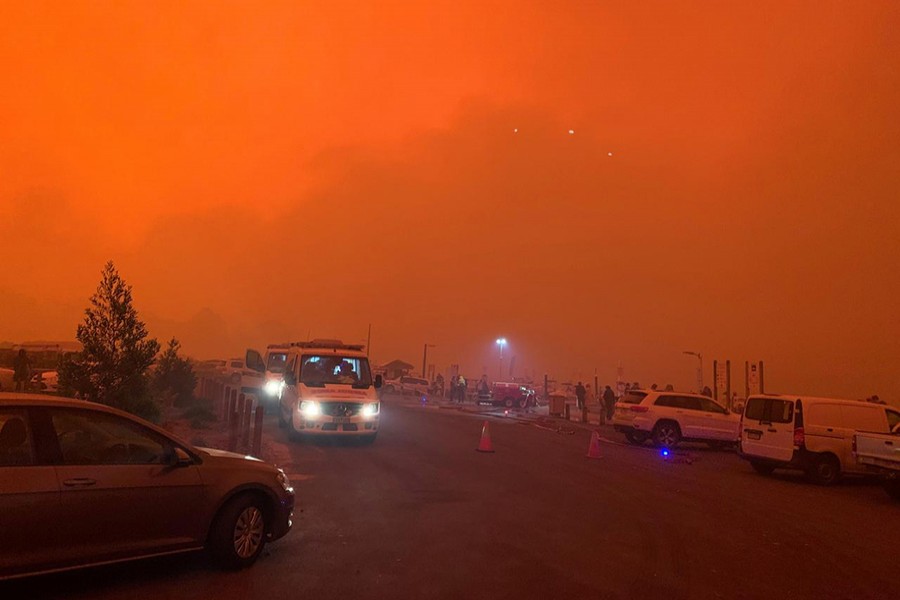Thousands of people in Australia have fled to the seafront to seek shelter from massive bushfires racing to the coast.
One blaze moved into the Victorian town of Mallacoota on Tuesday morning, throwing embers towards homes.
Locals described a "terrifying experience" of camping on wharves and boarding boats under blood-red skies.
Several holiday spots along the coast between Sydney and Melbourne are currently cut off by fire fronts.
More than a dozen "emergency-level" blazes span a 500km (310 miles) stretch across two Australian states - from Batemans Bay in New South Wales (NSW) to Bairnsdale in Victoria.
Victoria's state premier Daniel Andrews said navy ships may be called upon to provide food, water, and power to the townships. The main road in the region - the Princes Highway - has been closed off.
"Some of these isolated communities can be accessed by sea," he said.
Authorities had urged people in the region - many of them tourists - to stay put because by Monday it was too late and dangerous to evacuate.
The bushfires north of these communities had escalated due to a surge in temperatures, winds, and dry lightning.
Authorities said there were seven people missing in the region - four in Victoria and three in NSW.
"We do have real fears for their safety. They've been in active fire environments and we can't account for them," said Victoria's premier Daniel Andrews on Tuesday.
'We were ready to jump into the water'
Residents in the NSW holiday towns of Bermagui and Batemans Bay also fled on Tuesday morning to the waterfront or makeshift evacuation sites near the shore.
Locals told the BBC they had "bunkered in" as the front approached, raining ash on the beaches.
"It was bloody scary. The sky went red, and ash was flying everywhere," said Zoe Simmons in Batemans Bay.
In Mallacoota, one of the worst-affected spots on Tuesday, residents fled to the beach or took up shelter in fortified homes when they heard the warning siren go off at 08:00 local time.
"It should have been daylight but it was black like midnight and we could hear the fire roaring," said David Jeffrey, a local business owner. "We were all terrified for our lives."
"There's a rock wall that they've built to keep back the sea, and that was where we were going to jump into the water if the radiant heat had hit," he added.
The fire swept through the town destroying numerous buildings, but was kept back from the shore by a change in wind, locals said.
Firefighters had gathered at the shore as a last line of defence.
As the crisis unfolded, Victoria's state emergency commissioner Andrew Crisp told reporters there were "4,000 people on the beach".
The state's fire service co-ordinator Steve Warrington said: "It is pitch-black, it is quite scary... the community right now is under threat but we will hold our line and they will be saved and protected."
He said there had been "significant property losses" across the entire East Gippsland region in the past days.
Searing mid-40Cs heat combined with strong winds and lightning triggered more than 200 new fires across the state in the past 24 hours.
They have fuelled the rapid expansion of existing fronts, with several blazes so large they are generating their own thunderstorms and lightning.
It is another escalation in the nation's bushfire crisis which has seen hundreds of massive blazes destroy millions of hectares in the eastern states since September.
At least 10 people have died, among them civilians and three volunteer firefighters.


